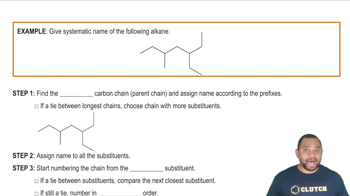Textbook Question
Why do aldehydes and ketones have lower boiling points than alcohols with similar molecular weights? Why are their boiling points higher than those of alkanes with similar molecular weights?
33
views
 Verified step by step guidance
Verified step by step guidance Verified video answer for a similar problem:
Verified video answer for a similar problem:



 :54m
:54mMaster IUPAC Rules for Naming Aldehydes Concept 1 with a bite sized video explanation from Jules
Start learning